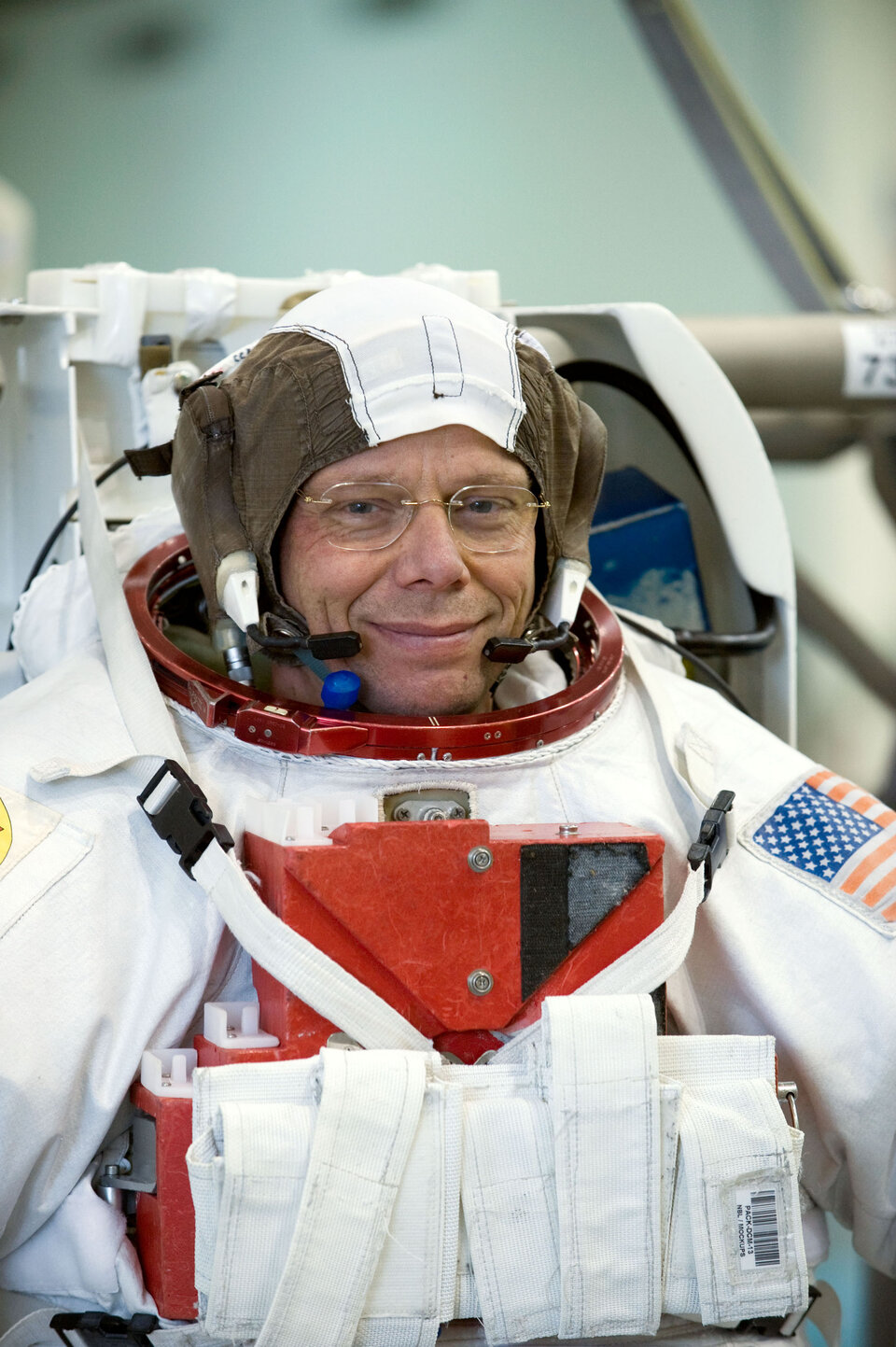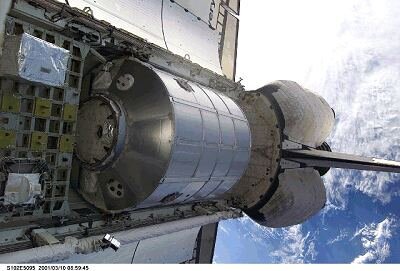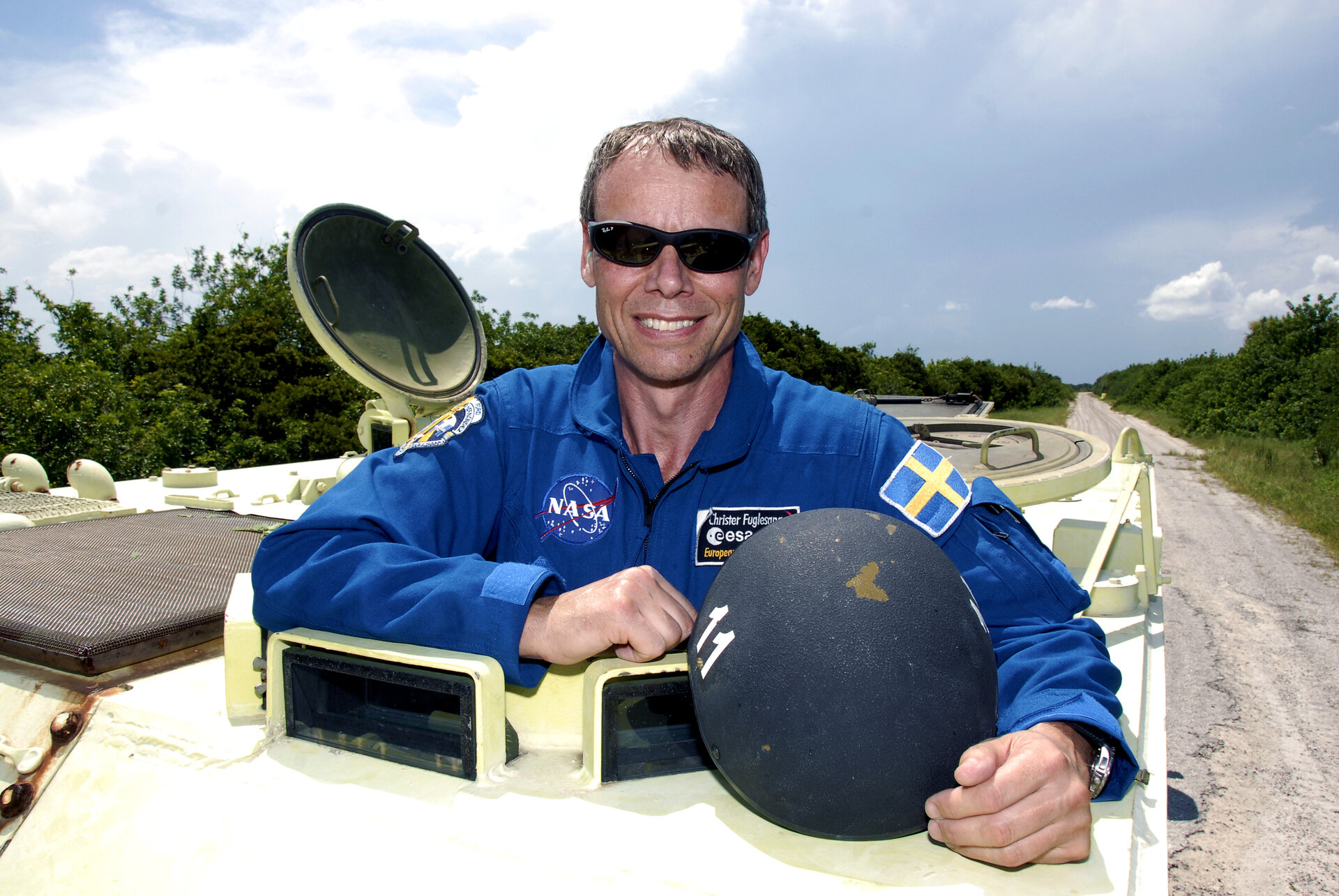About the mission
The Alissé mission is ESA astronaut Christer Fuglesang's second spaceflight. The mission got underway with the launch of Space Shuttle Discovery on flight STS-128 from NASA's Kennedy Space Center on 29 August 2009 at 05:59 CEST (28 August, 23:59 local time).
The principal focus of Fuglesang’s mission is his spacewalk activities as a Mission Specialist for STS-128. Fuglesang also undertakes experiment, educational and public relations activities as part of the Alissé Mission.
The 13-day mission marks the continued supply and assembly of the International Space Station, as well as many important milestones for ESA, European astronauts, and European science and industry.
Fuglesang participates in two of the three mission spacewalks (Extra-Vehicular Activity or EVA) as well as overseeing cargo transfers from the Multi-Purpose Logistics Module that was transported to the ISS in the Shuttle’s cargo bay.
The mission includes vital preparations for the arrival of the European-built Node 3 in February 2010. As well as important EVA maintenance tasks, the transportation of experiment equipment to the ISS, including a European-built MELFI freezer, and return of important payloads back to Earth including the European Technology Exposure Facility (EuTEF), which was located on the outside of the European Columbus laboratory for one and a half years. The mission also exchanges an ISS Expedition crewmember.
The focal points of the mission are as follows:

Spacewalk tasks
Three EVAs, or spacewalks, are scheduled to take place during the mission. Christer Fuglesang participates in the second and third spacewalks together with NASA astronaut John Olivas. The first spacewalk will be performed by Olivas and NASA astronaut Nicole Stott.
The main tasks of the EVAs are as follows:
Run external cabling in advance of the installation of the European-built Node 3 Module: Node 3, which was built in Europe under a barter agreement between ESA and NASA, is scheduled to be launched to the ISS in February 2010. In preparation for its arrival, Fuglesang and Olivas will run electricity and data cabling from the S0 truss section to the Node 1 left-side docking port where Node 3 will be attached;
Install a new Ammonia Tank Assembly on the P1 truss section: The Station’s ammonia tanks help with thermal regulation of the ISS. The task of installing a new tank will take place across two EVAs. On EVA 1, the old Ammonia Tank Assembly will be removed. During EVA 2, the new tank will be installed by Fuglesang and Olivas and the old tank stowed in the Shuttle’s cargo bay for return to Earth;
Return the EuTEF payload to Earth: The European Technology Exposure Facility (EuTEF), which has been located on the external payload platform of the European Columbus laboratory since February 2008, will be brought back by Space Shuttle Discovery after one and a half years of extensive scientific activity in orbit. This fully-automated, multi-user payload facility carries a suite of eight experiments that required exposure to the open space environment. The experiments cover a variety of disciplines including material science, physics, astrobiology, astronomy, and space technology;
Return the NASA MISSE payload to Earth: During the EVA to remove EuTEF, NASA’s Materials on the ISS Experiments (MISSE) will also be removed from the external surface of Columbus. These experiments evaluate the effect of the space environment on a large variety of exposed materials and have been receiving power from Columbus since their installation;
Install a Rate Gyro Assembly: Fuglesang and Olivas will remove a broken Rate Gyroscope and install a new one. This device is part of the US motion control systems to help with ISS orientation;
- Install Payload Attachment System on S3: During EVA 3 Fuglesang will install a Payload Attachment System on the S3 section of the Station's truss. This task was not achieved during STS-127 and was subsquently scheduled for STS-128.
Additional EVA tasks include cable configuration and replacing a failed electronics box.

Delivery of experiment facilities, equipment and supplies in the MPLM:
Fuglesang is responsible for overseeing the transfer of cargo from the Multi-Purpose Logistics Module (MPLM) and making sure it ends up in the correct location on the ISS.
The MPLMs are pressurised cargo containers that travel in the Shuttle’s cargo bay and are capable of holding over nine tonnes of cargo. ‘Leonardo’, the name of the MPLM used for this mission, transports a variety of standard ISS resupply items as well as the following items of interest:
The European-built Minus Eighty Laboratory Freezer for ISS (MELFI) 2. This freezer can maintain a temperature of -80 degrees Celsius to preserve biological and medical specimens until they can be brought back to Earth. Built under an agreement between ESA and the Japanese Aerospace Explaration Agency (JAXA) it will be installed in the Japanese Kibo laboratory on the International Space Station.
Materials Science Laboratory: ESA’s Materials Science Laboratory facility is the first materials research rack on the ISS and principal facility within NASA's Materials Science Research Rack in which is is transported to the ISS. It will be located in the US Destiny laboratory. The Materials Science Laboratory will carry out a variety of materials research in weightlessness.
Atmospheric Revitalization System for the European-built Node 3: The Atmospheric Revitalization System rack, will be installed in the European-built Node 3 when it arrives at the Station early next year. The Atmospheric Revitalization System helps to remove carbon dioxide and trace contaminants from the cabin atmosphere and monitors the composition of the air.
A new treadmill for the European-built Node 2: to act as an important exercise device for the ISS crew. The new treadmill called COLBERT has a different vibration suppression system and wider running band to the treadmill currently in use on the ISS.
Experiment facilities/consumables: In addition to the Materials Science Research Rack, NASA’s Fluids Integrated Rack for experiments with fluids, was transported to the ISS in the MPLM and installed in the US Destiny module. ESA’s SODI-IVIDIL experiment, which investigates the effects of vibrations on liquid diffusion, was uploaded on STS-128 along with important physiology experiment consumables.
- New crew quarters: This new sleeping compartment is a necessary addition with the increase to a permanent six-person ISS crew. It will be installed in the Japanese Kibo laboratory;
Other mission tasks include:

ISS Expedition 20 crew exchange: NASA astronaut Timothy Kopra, who arrived at the ISS on Shuttle flight STS-127, was replaced as an ISS Expedition 20 Flight Engineer by NASA astronaut Nicole Stott shortly after she arrived at the ISS on the STS-128 flight.
Experiment activities: During this mission Christer Fuglesang is a subject for a number of ESA experiments in the field of human physiology. He also participates in additional non-ESA experiment activities, again in the area of human physiology. He also conducts an education experiment based on comic radiation and the ISS. An exhaustive ESA research programme is ongoing but largely carried out by the ISS Expedition crew.


